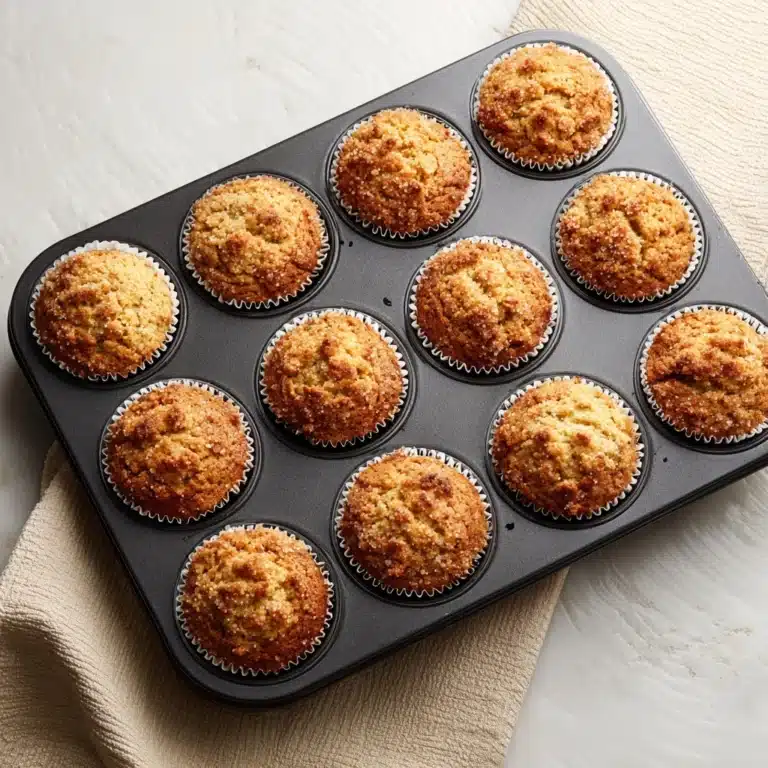If there’s one breakfast bake that brings pure joy to my kitchen, it’s Sourdough Bagels. With their glossy golden crusts and chewy, tender insides, these beauties capture everything we love about classic bagels but with the rich, tangy flavor only sourdough can provide. Whether you’re a bagel purist or an adventurous topping artist, homemade Sourdough Bagels are a deeply rewarding project—totally doable, absolutely delicious, and guaranteed to make your mornings a little more special.

Ingredients You’ll Need
The magic of Sourdough Bagels lies in the humble but high-quality ingredients. Each one has a key role to play: from structure to flavor, from chew to color, every element is chosen to make your bagels truly shine.
- Active Sourdough Starter (1 cup): The heart of these bagels—make sure it’s bubbly and freshly fed for the best rise and flavor.
- Warm Water (¾ cup): Just warm, not hot, to help mix the dough and activate that lively starter.
- Honey (1 tablespoon): Adds subtle sweetness and a gorgeous depth to the crumb while nourishing the wild yeasts.
- Bread Flour (3½ cups): High-protein flour means extra chew and classic bagel texture—absolutely essential.
- Salt (1½ teaspoons): Brings balance and brings out every note of tartness and sweetness in the dough.
- Sugar (1 tablespoon, for boiling water): Helps achieve that iconic shiny, crisp crust after boiling.
- Toppings (sesame, poppy, everything bagel seasoning, optional): Toasted seeds or seasoning blends take these bagels over the top—customize to suit your cravings!
How to Make Sourdough Bagels
Step 1: Make the Dough
Start by adding your active sourdough starter, warm water, and honey into a large mixing bowl. Stir them together to evenly distribute the honey and starter. Add in the bread flour and salt, and mix until you have a shaggy, slightly stiff dough. Resist the urge to add more water—a drier dough leads to that perfect chewy bagel texture!
Step 2: Knead for Texture
Turn the dough out onto a lightly floured surface and knead vigorously for 8 to 10 minutes. You want a smooth dough that springs back when pressed. A good knead here builds the gluten strands that give Sourdough Bagels their unmistakable bite.
Step 3: First Rise
Place your dough in a greased bowl and cover it snugly. Let it rise at room temperature for 8 to 12 hours, or until doubled in size. This is where all that sourdough magic happens, developing lively flavor and aroma.
Step 4: Shape Your Bagels
Once the dough has risen, gently punch it down and divide into 8 equal pieces. Shape each piece into a ball, then poke a hole through the middle with your finger. Stretch each hole until you have a classic bagel ring, then place them on a lined tray. Cover and let the bagels rest for about 30 minutes to relax the gluten for easier boiling.
Step 5: Boil for Shine and Chew
Bring a large pot of water to a simmer and stir in the sugar. Gently drop each shaped bagel into the water, boiling for 30 seconds per side. Use a slotted spoon to flip them—this step gives your Sourdough Bagels their trademark gloss and hearty exterior. For a chewier crust, feel free to boil them a bit longer!
Step 6: Top and Bake
Transfer each boiled bagel onto a parchment-lined baking sheet. Sprinkle generously with your favorite toppings while they’re still tacky. Bake in a preheated 425°F (220°C) oven for 20 to 25 minutes, until deeply golden and fragrant. Move them to a wire rack to cool (if you can wait that long!), then dig in.
How to Serve Sourdough Bagels

Garnishes
The right garnish can transform a simple Sourdough Bagel into a brunch masterpiece. I love a thick swipe of whipped cream cheese, a sprinkle of flaky sea salt, or a pile of fresh microgreens for a pop of color. If you’re feeling adventurous, try a drizzle of local honey or a layer of tangy goat cheese for a delicious twist.
Side Dishes
Sourdough Bagels are wonderfully versatile and pair beautifully with a simple fruit salad, creamy scrambled eggs, or a crunchy vegetable slaw. For a real New York-style spread, add smoked salmon, thinly sliced red onion, and capers, and let everyone build their own breakfast plate.
Creative Ways to Present
For a showstopping brunch board, slice your bagels and arrange them with colorful toppings and spreads. They’re also irresistible turned into breakfast sandwiches—simply add eggs, greens, and your favorite cheese. Or toast bite-sized pieces and serve with a trio of dips for a playful appetizer.
Make Ahead and Storage
Storing Leftovers
If you’re lucky enough to have extras, cool your Sourdough Bagels completely and store them in an airtight bag or container at room temperature for up to two days. They’ll stay pleasantly soft and chewy, perfect for toasting the next morning.
Freezing
Sourdough Bagels freeze beautifully! Once cooled, pop them into a zip-top freezer bag, squeezing out as much air as possible. They’ll keep their freshness for up to three months—just thaw at room temperature or warm them straight from the freezer for a quick breakfast boost.
Reheating
To bring your bagels back to life, slice and toast them in an oven, toaster, or on a pan until the crust is crispy and the insides are steamy. If you prefer a softer bite, a minute or two in the microwave wrapped in a damp paper towel works wonders too.
FAQs
Can I use all-purpose flour instead of bread flour for Sourdough Bagels?
You can substitute, but bread flour gives that authentic chew and structure. All-purpose flour will work in a pinch but expect a slightly softer, less chewy result.
How can I cold-proof Sourdough Bagels for even more flavor?
After shaping the bagels, cover and refrigerate them overnight. This slow fermentation develops a deeper sourdough tang. Let them come to room temperature before boiling and baking for best results.
What’s the secret to getting really shiny, golden bagels?
That beautiful crust comes from boiling the bagels in water with a touch of sugar. Don’t skip this step—it’s the signature move for classic, bakery-style Sourdough Bagels!
Is it necessary to use a stand mixer for kneading?
No, a good old-fashioned knead by hand is more than enough. It’s a great way to connect with the dough and build strength—just be patient and enjoy the process!
Can I use discard starter for this recipe?
It’s best to use a freshly fed, active starter for a good rise and flavor. Discard starter won’t provide the same leavening power or complexity in your Sourdough Bagels.
Final Thoughts
There’s nothing quite like the home-baked aroma (and taste!) of Sourdough Bagels straight from your own oven. I hope you give these a try and have as much fun making—and eating—them as I do. Your kitchen is about to become everyone’s favorite bagel spot!
Print
Sourdough Bagels Recipe
- Total Time: 9 hours
- Yield: 8 bagels 1x
- Diet: Vegetarian
Description
Learn how to make delicious sourdough bagels at home with this easy recipe. These bagels are chewy, flavorful, and perfect for breakfast or a snack.
Ingredients
For the Bagels:
- 1 cup active sourdough starter (fed and bubbly)
- ¾ cup warm water
- 1 tablespoon honey
- 3½ cups bread flour
- 1½ teaspoons salt
For Boiling:
- 1 tablespoon sugar
Toppings (optional):
- Sesame seeds
- Poppy seeds
- Everything bagel seasoning
Instructions
- Prepare the Dough: Combine starter, water, and honey. Add flour and salt. Knead until smooth.
- Rise: Let dough rise for 8-12 hours until doubled.
- Shape: Divide and shape dough into 8 balls. Form bagels and let rest.
- Boil: Boil bagels in sugared water for 30 sec each side.
- Bake: Sprinkle with toppings and bake at 425°F for 20-25 minutes.
- Cool: Cool on a wire rack before serving.
Notes
- For a chewier crust, boil the bagels longer.
- Cold-proof shaped bagels in the fridge overnight for deeper flavor.
- Prep Time: 30 minutes
- Cook Time: 25 minutes
- Category: Breakfast
- Method: Baking
- Cuisine: American
Nutrition
- Serving Size: 1 bagel
- Calories: 220
- Sugar: 2 g
- Sodium: 310 mg
- Fat: 0.5 g
- Saturated Fat: 0 g
- Unsaturated Fat: 0.5 g
- Trans Fat: 0 g
- Carbohydrates: 45 g
- Fiber: 2 g
- Protein: 7 g
- Cholesterol: 0 mg







